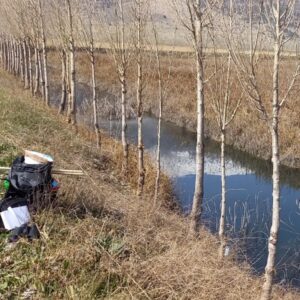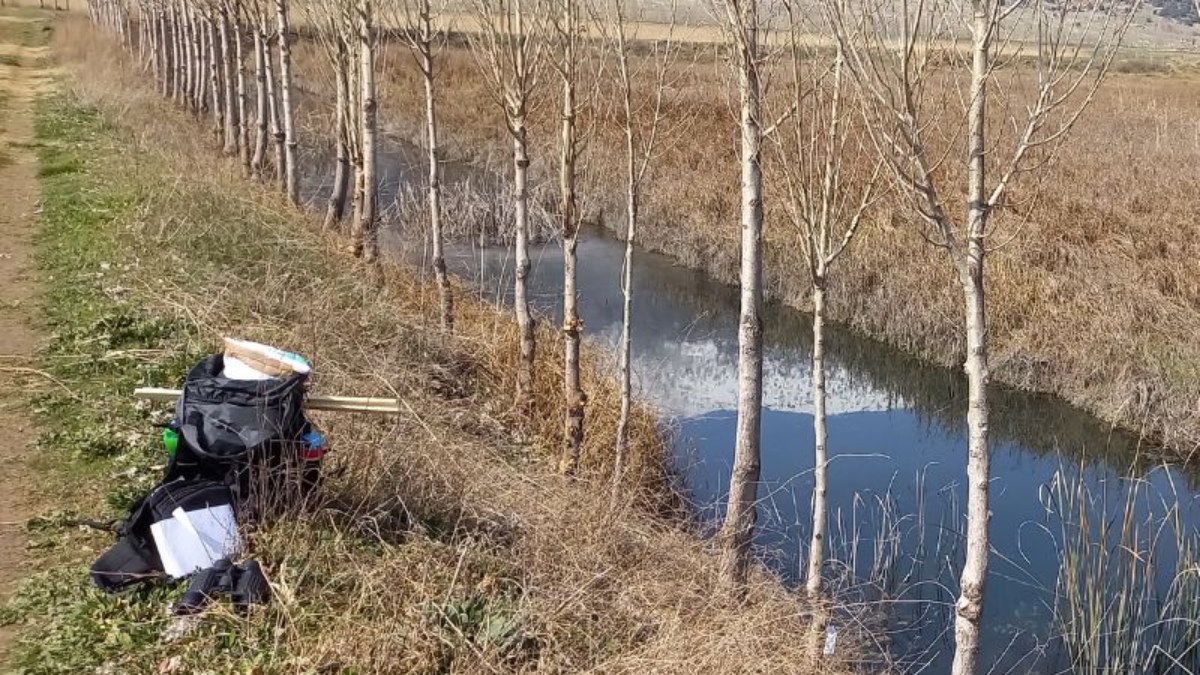Of Frogs and Princes, and Needles in a Haystack
By Phil Good, A Rocha Lebanon volunteer
Well, hello, I am volunteering to help find a frog! Now this needs putting into context, does it not? It invites several questions. Why? Are you an expert in frogs? Do you like frogs? How do you do that?
Let me explain then. This particular painted frog was thought extinct until it was discovered 50 years later in the wetlands of a nearby country. Now here in Lebanon, we have the Aammiq wetlands, which are relatively close to that site with a similar climate and environment. And there was a reported sighting some 20 years ago. So yes, it is deemed important enough to warrant a thorough research project to see if indeed there are such painted frogs in Aammiq.
I am no expert in frogs, and I cannot really say I even like frogs very much. But I do love the natural world and the complex systems that make up a natural habitat. The interdependence of multiple life forms and how they each contribute to a sustainable ecology is both fascinating and beautiful. So I am very happy to go helping to find a rare frog. Who knows? As I get to know more about him, he might prove to be a Prince Charming and change my appreciation.
How then will we go looking for this frog? Well, I have a lot to learn now, and it has been very interesting. Firstly, like most creatures, frogs make a noise, and also we have learnt that every species makes a distinctive noise. It is possible to identify animals using only the sounds they make. If we make a recording of the sounds in a location, we can then scan the recordings to identify all the species in the location of the microphone. This is very powerful as it no longer depends on a human who might fall asleep or just be looking the wrong way. This is used in the UK to identify which species of bats are living in a roofspace and can then inform the builders and planners of the importance to nature of an old building.
That is what we are doing then. I go to the Aammiq wetlands and place recording devices around the reserve, and every five days or so, I go back extract the recordings and move the devices to a new location. We will do this for a month or so until we have covered the whole reserve. Then we have to scan the recordings and look for the calls of this rare painted frog. This is helped by using software, as there are many gigabytes of data to be reviewed.

So Last Saturday, I went to the Aammiq, just to put in place two test devices to make sure things were going to work correctly as planned. I was shocked as immediately we heard frogs calling, or should I say croaking. They were everywhere. There were thousands of them, and at times, it sounded like a wall of noise coming out of the dense reedbeds. It was a beautiful, warm, and sunny day, and the frogs were enjoying the rising temperatures. The wetlands are full of water now after the winter, and the snow on the mountains around is melting, providing a steady stream of fresh water running through this rich habitat.
Indeed, it will be a challenge to find the call of our painted frog, because of the sometimes deafening calls of the other species here. It really will be like looking for a needle in a haystack.

A few days later, I returned to collect the results and put in place all five devices we have. This was a real delight as the wetlands were looking gorgeous as the sun shone and there was an abundance of life all around. The frogs were calling, of course, but they are difficult to see as they can sense my approach
and go silent as I come closer. There are a lot of birds there, but the migrant season has not really started yet. I saw plenty of species even so. There were lots of turtles, the largest I’ve seen in freshwater; but again, they are very difficult to creep up on, so no pictures of them this week.
The files we created from the first two devices are now being analysed by the team of researchers.
On Monday, I will go again and collect the next batch of recordings and move the devices.


